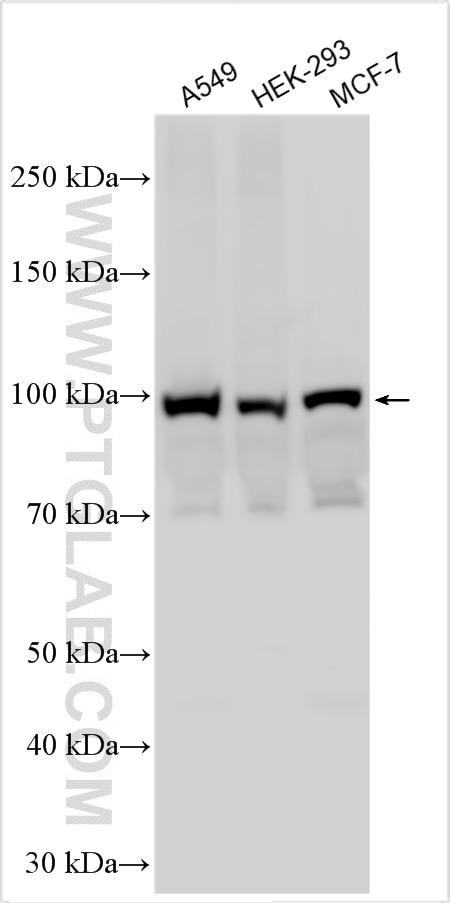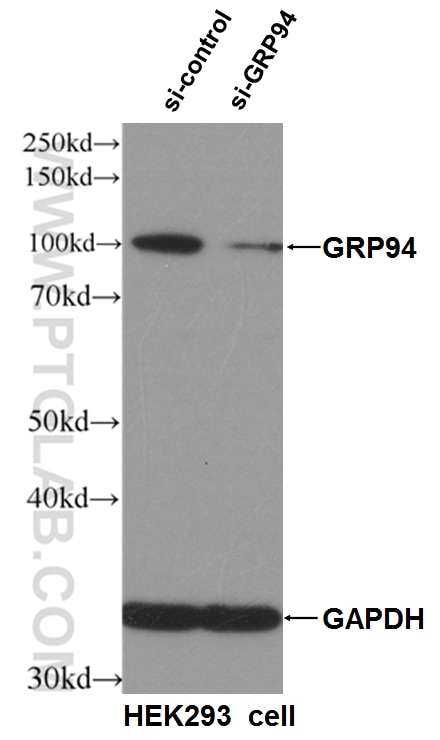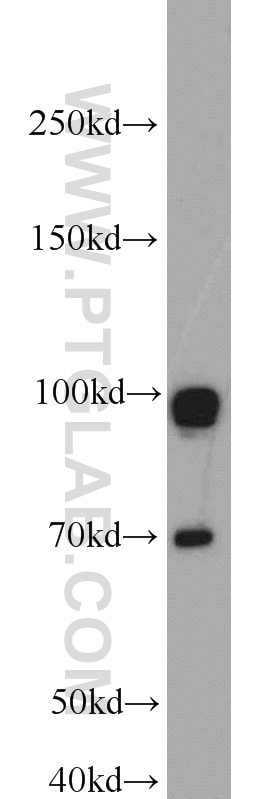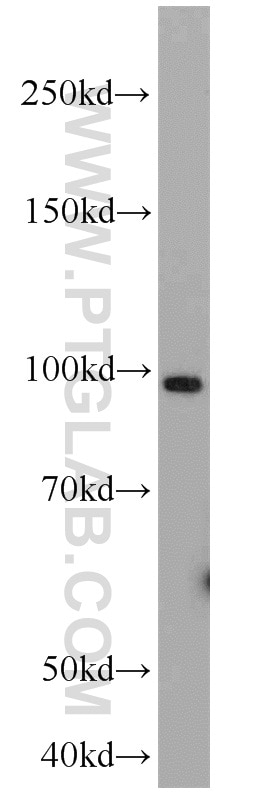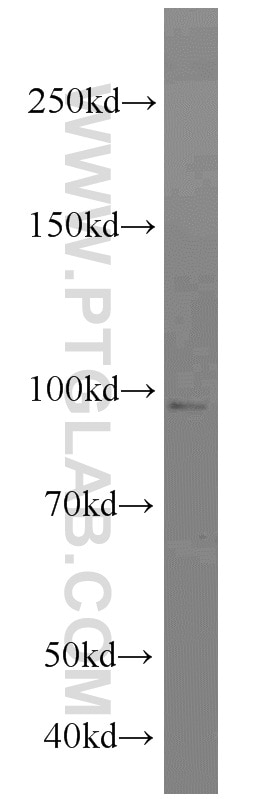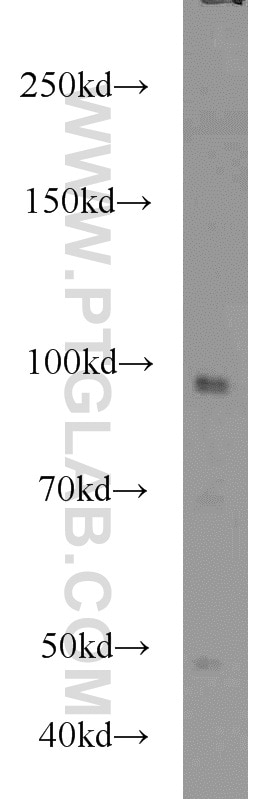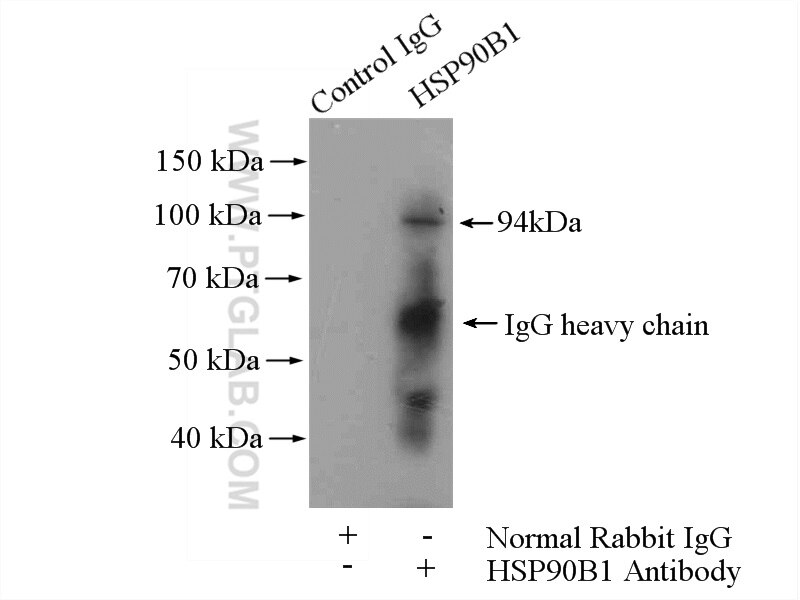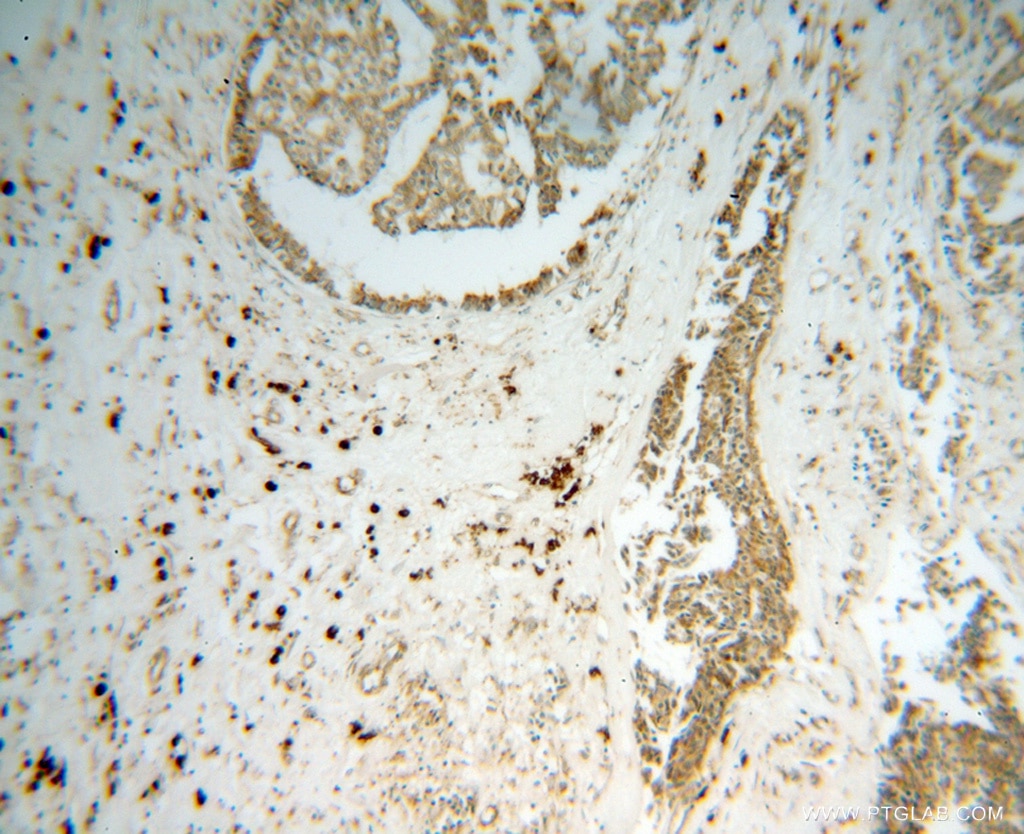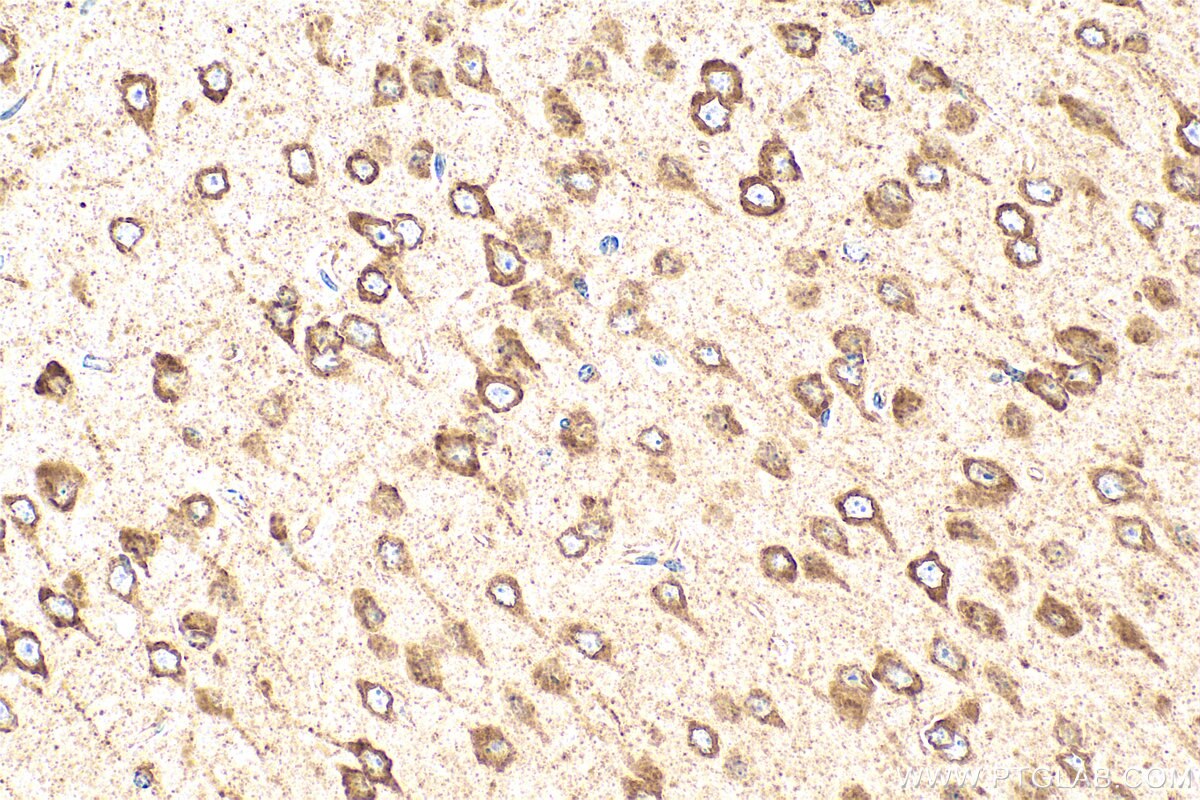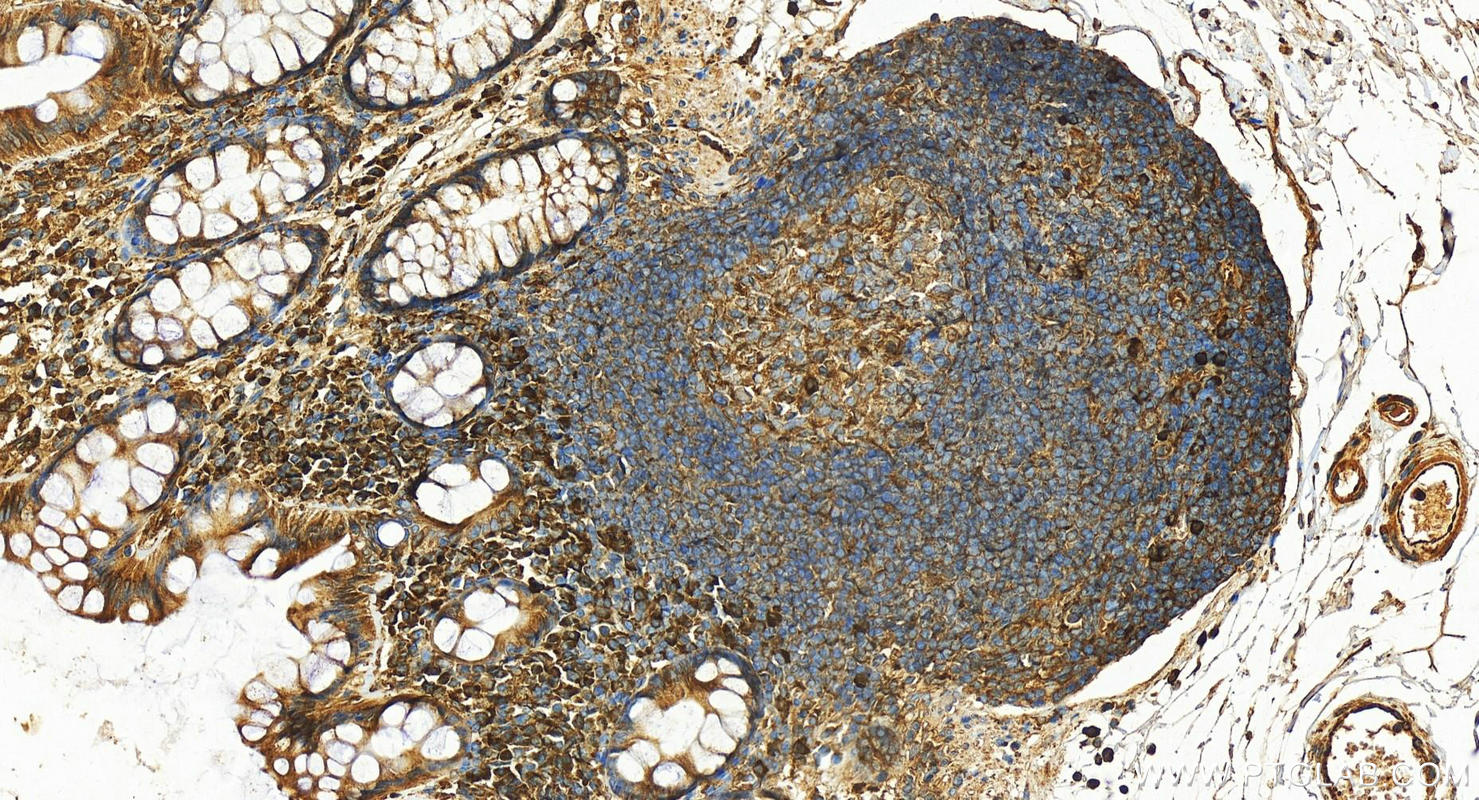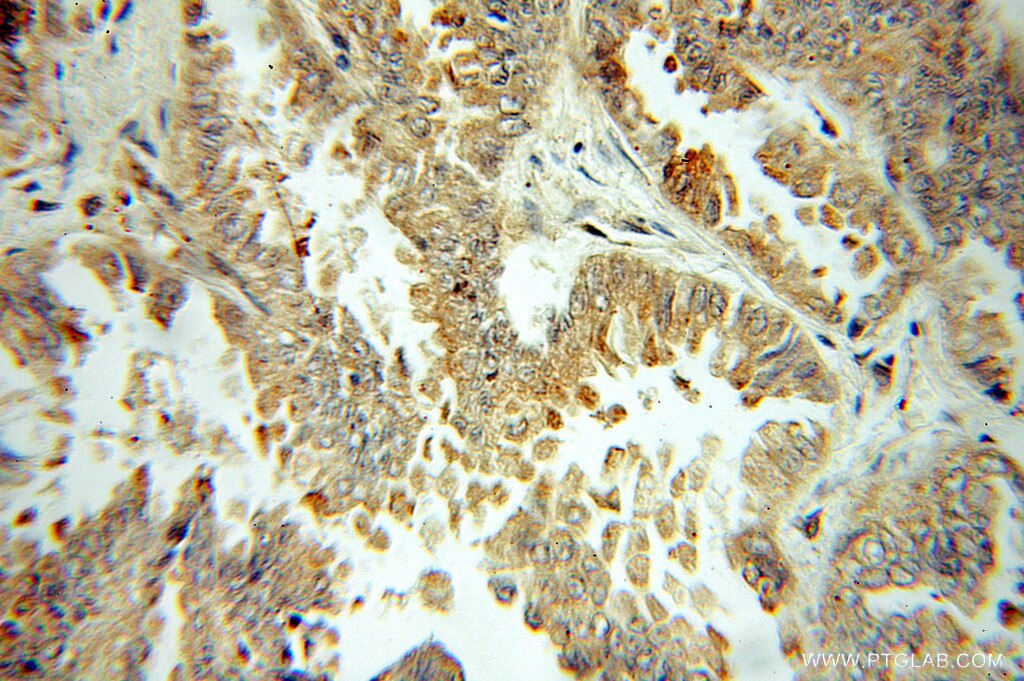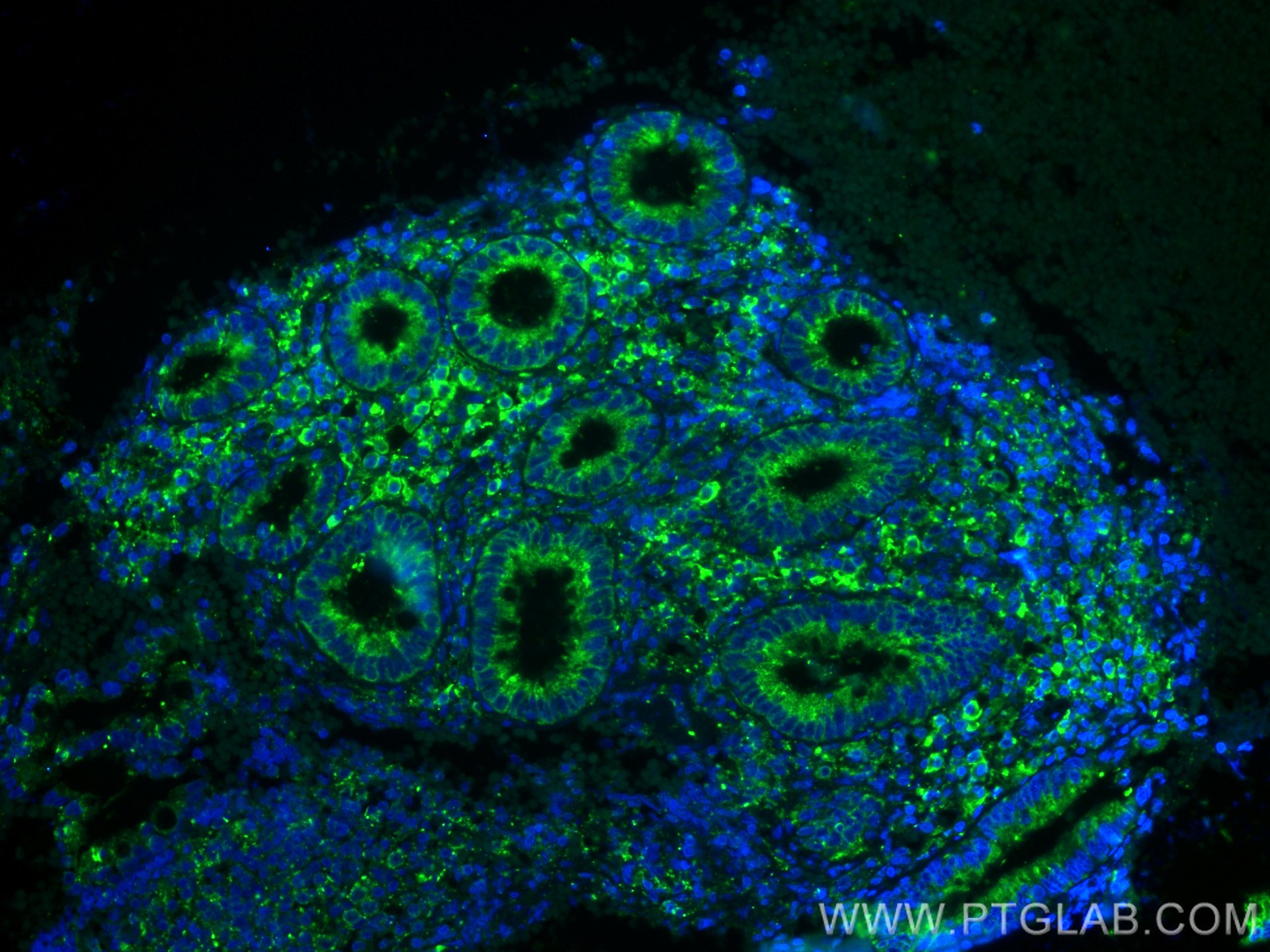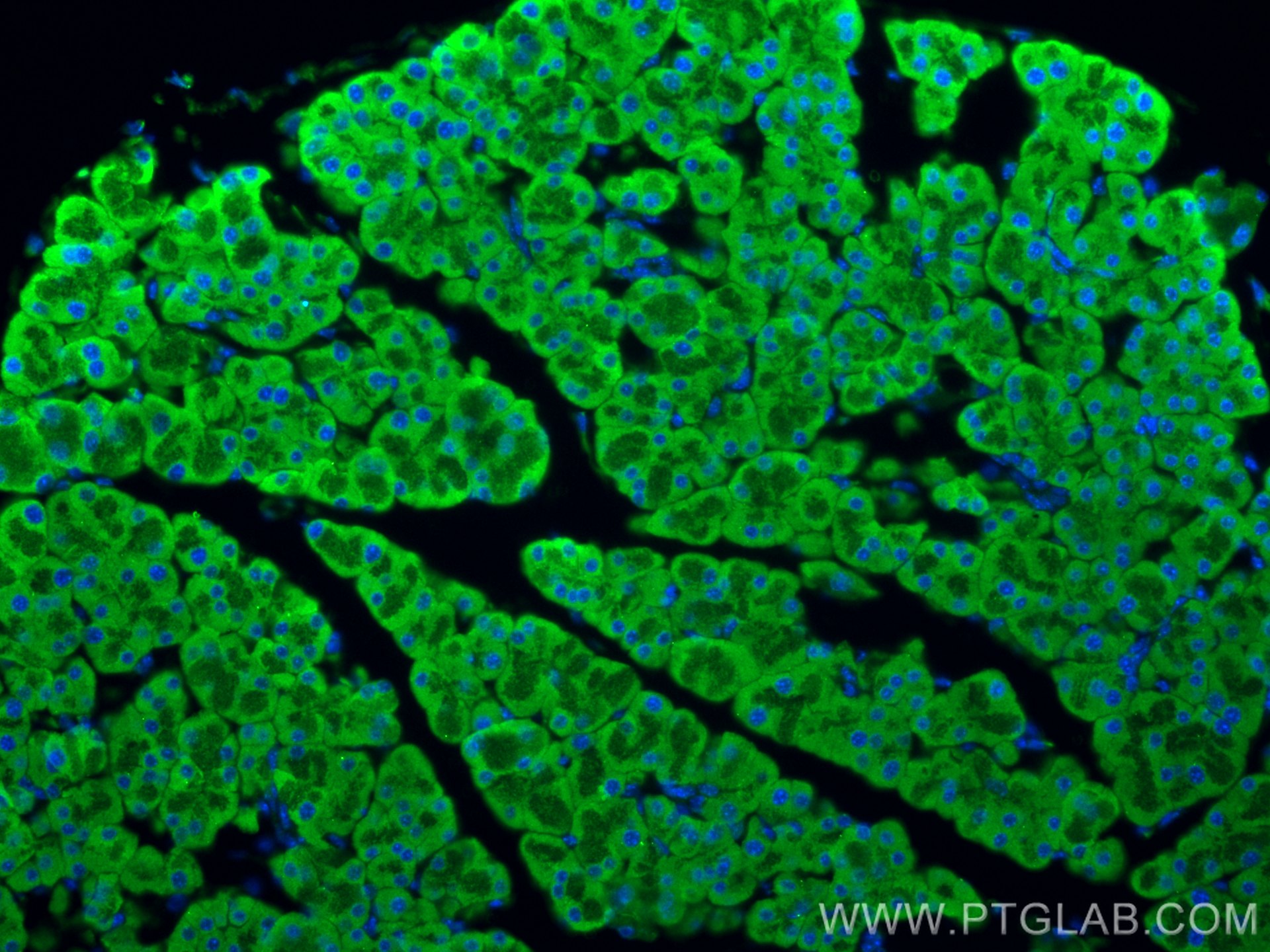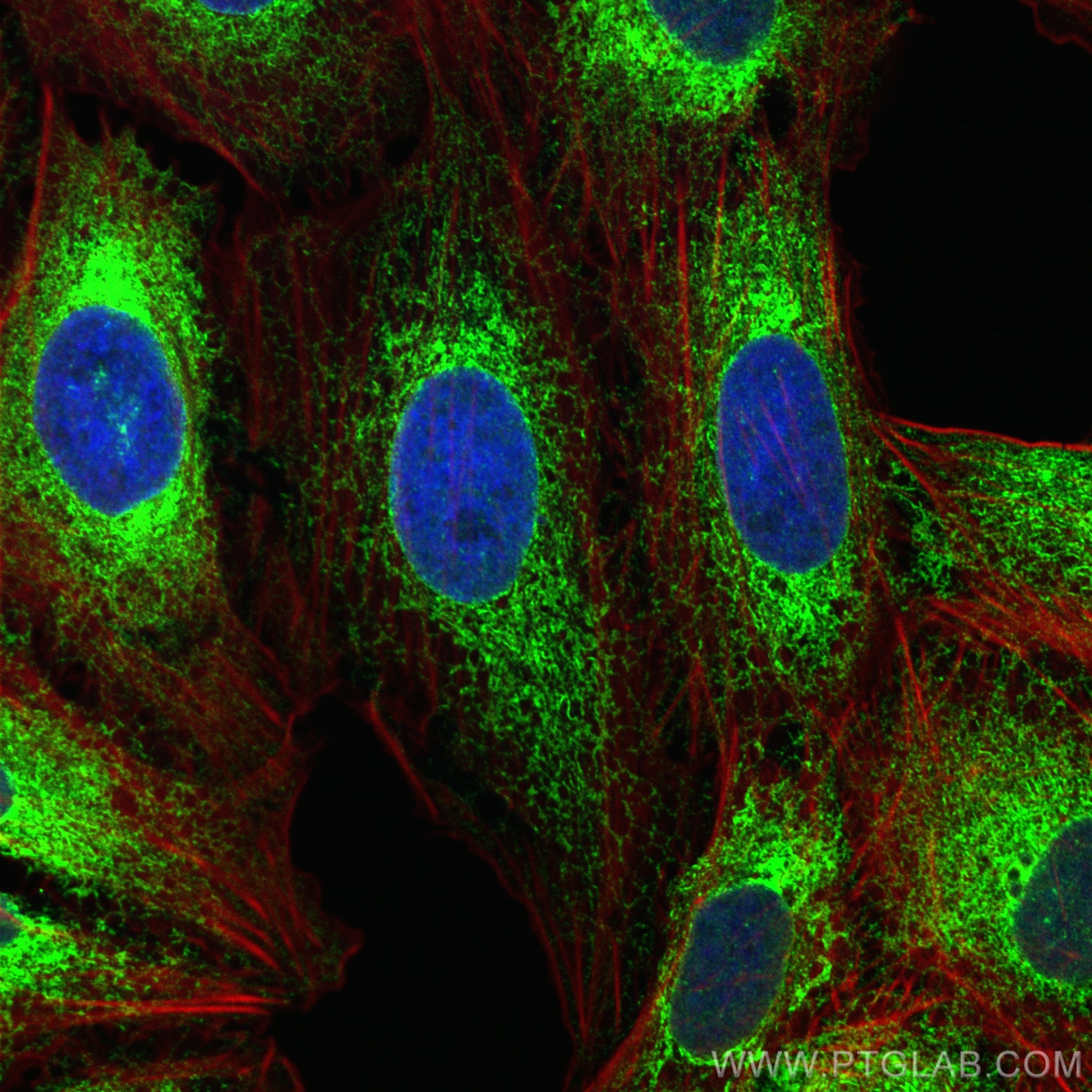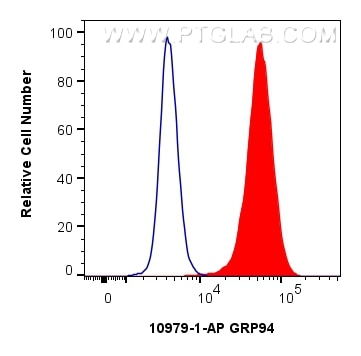- Phare
- Validé par KD/KO
Anticorps Polyclonal de lapin anti-GRP94
GRP94 Polyclonal Antibody for WB, IHC, IF-P, FC (Intra), IP, ELISA
Hôte / Isotype
Lapin / IgG
Réactivité testée
Humain, rat, souris et plus (1)
Applications
WB, IHC, IF-P, FC (Intra), IP, ELISA
Conjugaison
Non conjugué
N° de cat : 10979-1-AP
Synonymes
Galerie de données de validation
Applications testées
| Résultats positifs en WB | cellules A549, cellules HEK-293, cellules K-562, cellules MCF-7, cellules NIH/3T3 |
| Résultats positifs en IP | cellules MCF-7 |
| Résultats positifs en IHC | tissu de côlon humain, tissu cérébral de souris, tissu de cancer du poumon humain, tissu de cancer du sein humain il est suggéré de démasquer l'antigène avec un tampon de TE buffer pH 9.0; (*) À défaut, 'le démasquage de l'antigène peut être 'effectué avec un tampon citrate pH 6,0. |
| Résultats positifs en IF-P | tissu pancréatique de souris, tissu d'appendicite humain |
| Résultats positifs en FC (Intra) | cellules MCF-7, |
Dilution recommandée
| Application | Dilution |
|---|---|
| Western Blot (WB) | WB : 1:1000-1:4000 |
| Immunoprécipitation (IP) | IP : 0.5-4.0 ug for 1.0-3.0 mg of total protein lysate |
| Immunohistochimie (IHC) | IHC : 1:50-1:500 |
| Immunofluorescence (IF)-P | IF-P : 1:50-1:500 |
| Flow Cytometry (FC) (INTRA) | FC (INTRA) : 0.80 ug per 10^6 cells in a 100 µl suspension |
| It is recommended that this reagent should be titrated in each testing system to obtain optimal results. | |
| Sample-dependent, check data in validation data gallery | |
Applications publiées
| WB | See 7 publications below |
| IHC | See 1 publications below |
| IF | See 1 publications below |
Informations sur le produit
10979-1-AP cible GRP94 dans les applications de WB, IHC, IF-P, FC (Intra), IP, ELISA et montre une réactivité avec des échantillons Humain, rat, souris
| Réactivité | Humain, rat, souris |
| Réactivité citée | rat, Humain, porc, souris |
| Hôte / Isotype | Lapin / IgG |
| Clonalité | Polyclonal |
| Type | Anticorps |
| Immunogène | GRP94 Protéine recombinante Ag1439 |
| Nom complet | heat shock protein 90kDa beta (Grp94), member 1 |
| Masse moléculaire calculée | 96 kDa |
| Poids moléculaire observé | 94 kDa |
| Numéro d’acquisition GenBank | BC009195 |
| Symbole du gène | GRP94 |
| Identification du gène (NCBI) | 7184 |
| Conjugaison | Non conjugué |
| Forme | Liquide |
| Méthode de purification | Purification par affinité contre l'antigène |
| Tampon de stockage | PBS with 0.02% sodium azide and 50% glycerol |
| Conditions de stockage | Stocker à -20°C. Stable pendant un an après l'expédition. L'aliquotage n'est pas nécessaire pour le stockage à -20oC Les 20ul contiennent 0,1% de BSA. |
Informations générales
Glucose-regulated protein 94 (GRP94), also called HSP90B1 and GP96, is an endoplasmic reticulum (ER)-resident member of the heat shock protein 90 (HSP90) family (PMID: 33802964; 24658275). Under ER stress conditions, GRP94 accelerates its function as a molecular chaperone. Client proteins of GRP94 include toll-like receptors (TLRs), glycoprotein (GP) IX subunit, insulin-like growth factors (IGFs), proinsulin, and integrins (PMID: 7913987; 32781621; 22079671). As well as being an ER chaperone, GRP94 can also participate in Calcium regulation and is also a regulator of innate and adaptive immunity (PMID: 33802964; 11584270).
Protocole
| Product Specific Protocols | |
|---|---|
| WB protocol for GRP94 antibody 10979-1-AP | Download protocol |
| IHC protocol for GRP94 antibody 10979-1-AP | Download protocol |
| IF protocol for GRP94 antibody 10979-1-AP | Download protocol |
| IP protocol for GRP94 antibody 10979-1-AP | Download protocol |
| Standard Protocols | |
|---|---|
| Click here to view our Standard Protocols |
Publications
| Species | Application | Title |
|---|---|---|
J Neuroinflammation TRPV4 contributes to ER stress and inflammation: implications for Parkinson's disease. | ||
Vet Microbiol ARFGAP1 binds to classical swine fever virus NS5A protein and enhances CSFV replication in PK-15 cells. | ||
Mol Med Rep Gaseous signalling molecule SO2 via Hippo‑MST pathway to improve myocardial fibrosis of diabetic rats. | ||
J Immunol Res Negative Feedback of the cAMP/PKA Pathway Regulates the Effects of Endoplasmic Reticulum Stress-Induced NLRP3 Inflammasome Activation on Type II Alveolar Epithelial Cell Pyroptosis as a Novel Mechanism of BLM-Induced Pulmonary Fibrosis | ||
Carcinogenesis Extracellular Vesicles Long RNA Profiling Identifies Abundant mRNA, circRNA and lncRNA in Human Bile as Potential Biomarkers for Cancer Diagnosis | ||
Exp Brain Res CircNCOA4 knockdown attenuates OGD-induced neuron injury through miR-338-5p/PDE4B axis |
